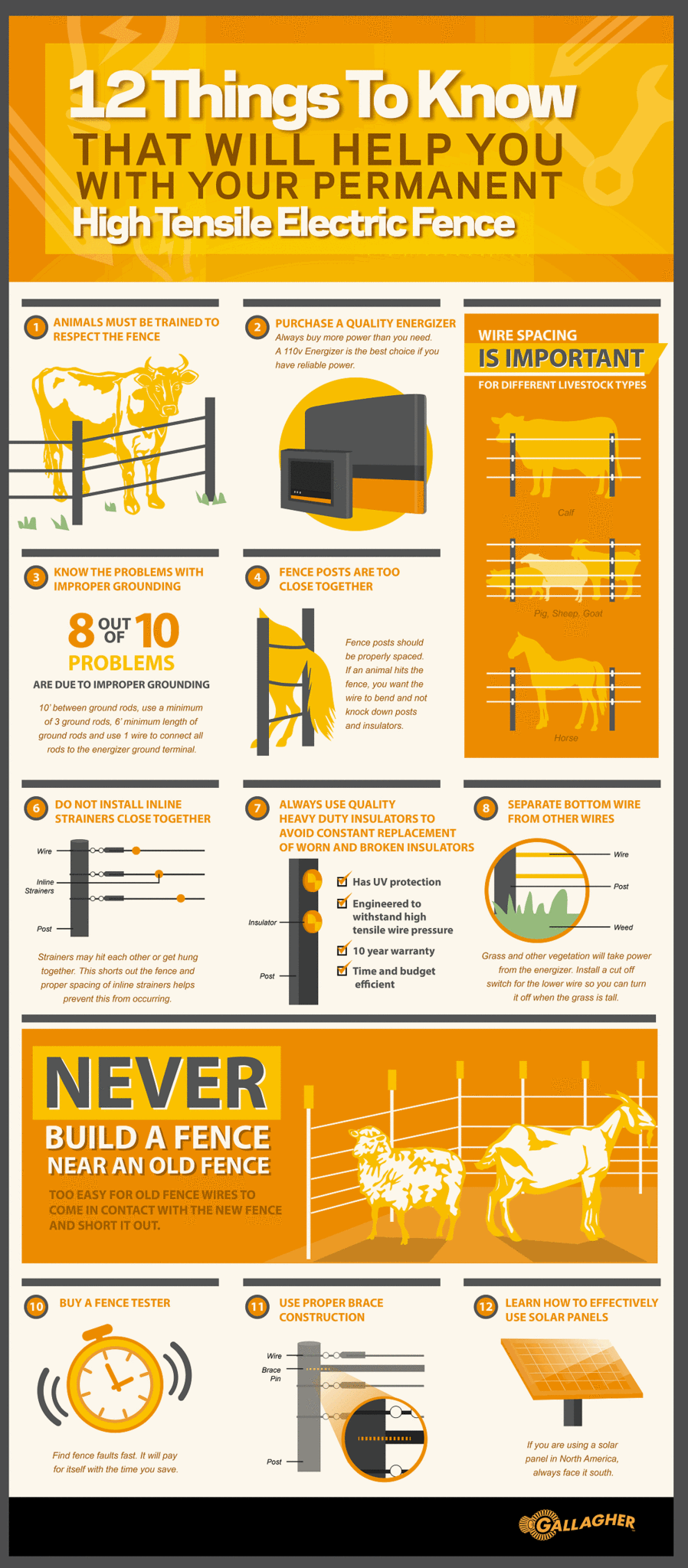
1. Animals must be trained to respect the fence
2. Purchase a quality energizer - Always buy more power than you need. A 110v energizer is the best choice if you have reliable power.
3. Know the problems with improper grounding - 8 out of 10 problems are due to improper grounding! 10' between ground rods, use a minimum of 3 ground rods, 6' minimum length of ground rods and use 1 wire to connect all rods to the energizer ground terminal.
4. Fence posts are too close together - Fence posts should be properly spaced. If an animal hits the fence, you want the wire to bend and not knock down posts and insulators.
5. Wire spacing is important for different livestock types - Cattle: Evenly spaced wires up to the animal's shoulders, Pig/sheep/goat: More wires low and wires up to the height of the animal, Horses: First wire at about the knee height of the animal and wires up to its torso height.
6. Do not install inline strainers close together - Strainers may hit each other or get hung together. This shorts out the fence and proper spacing of inline strainers helps prevent this from occurring.
7. Always use quality heavy duty insulators to avoid constant replacement of worn and broken insulators.
8. Separate bottom wire from other wires - Grass and other vegetation will take power from the energizer. Install a cut off switch for the lower wire so you can turn it off when the grass is tall.
9. Never build a fence near an old fence - Too easy for old wires to come in contact with the new fence and short it out.
10. Buy a fence tester - Find fence faults fast, it will pay for itself with the time you save!
11. Use proper brace construction
12. Learn how to effectively use solar panels - in North America, always point it south.
2. Purchase a quality energizer - Always buy more power than you need. A 110v energizer is the best choice if you have reliable power.
3. Know the problems with improper grounding - 8 out of 10 problems are due to improper grounding! 10' between ground rods, use a minimum of 3 ground rods, 6' minimum length of ground rods and use 1 wire to connect all rods to the energizer ground terminal.
4. Fence posts are too close together - Fence posts should be properly spaced. If an animal hits the fence, you want the wire to bend and not knock down posts and insulators.
5. Wire spacing is important for different livestock types - Cattle: Evenly spaced wires up to the animal's shoulders, Pig/sheep/goat: More wires low and wires up to the height of the animal, Horses: First wire at about the knee height of the animal and wires up to its torso height.
6. Do not install inline strainers close together - Strainers may hit each other or get hung together. This shorts out the fence and proper spacing of inline strainers helps prevent this from occurring.
7. Always use quality heavy duty insulators to avoid constant replacement of worn and broken insulators.
8. Separate bottom wire from other wires - Grass and other vegetation will take power from the energizer. Install a cut off switch for the lower wire so you can turn it off when the grass is tall.
9. Never build a fence near an old fence - Too easy for old wires to come in contact with the new fence and short it out.
10. Buy a fence tester - Find fence faults fast, it will pay for itself with the time you save!
11. Use proper brace construction
12. Learn how to effectively use solar panels - in North America, always point it south.
